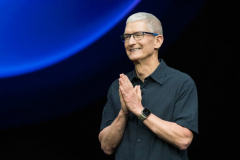HomeBusiness NewsMacro trends and Gen Z drive India’s e-lifestyle boom, says Bain & Company and Myntra study
As India’s e-lifestyle sector continues to grow, the interplay of macroeconomic factors, shifting consumer preferences, and technological advancements will likely shape the future landscape of online retail. With both established and emerging players adapting to these trends, the next few years promise to be a period of dynamic change and opportunity in India’s lifestyle market.
 By Shruti Mishra August 21, 2024, 12: 01: 22 AM IST (Published)
By Shruti Mishra August 21, 2024, 12: 01: 22 AM IST (Published)
India’s lifestyle market, currently valued at $130 billion, is on the cusp of transformative growth, driven by changing consumer behaviours and technological advancements. According to a recent study by Bain & Company and Myntra, the market is expected to expand at a 10%-12% compound annual growth rate (CAGR), reaching $210 billion within the next five years.
The e-lifestyle sector, which comprises fashion, beauty, and personal care, is projected to experience even more dramatic growth, increasing from $16-$17 billion in 2023 to between $40-$45 billion by 2028.
In an interview with CNBC-TV18, Shyam Unnikrishnan, Partner at Bain & Company, highlighted three pivotal factors fuelling the rise of the e-lifestyle market in India. Firstly, macroeconomic tailwinds are expected to play a crucial role.
As India advances towards becoming the world’s third-largest economy, a surge in discretionary income will likely lead to increased spending in lifestyle categories. Secondly, the shifting consumer base, particularly the emergence of fashion-forward Gen Z shoppers, is reshaping preferences.
This demographic is gravitating towards organized retail channels and quick, trend-driven shopping experiences. Thirdly, innovations on the supply side—such as trend-first fashion, technology-enhanced discovery, and expedited delivery—are expected to bolster the overall consumer value proposition, making online shopping increasingly attractive, Unnikrishnan said.
He noted that lifestyle products are often a gateway for online retail. According to the study, approximately 40% to 45% of first-time online shoppers make a lifestyle product their initial purchase, Unnikrishnan stated.
These consumers tend to browse extensively, averaging 25 to 30 products before making a decision. Influencer content and high-quality images are pivotal in converting these browsers into buyers, he added.
Interestingly, while the average transaction size may be smaller,





